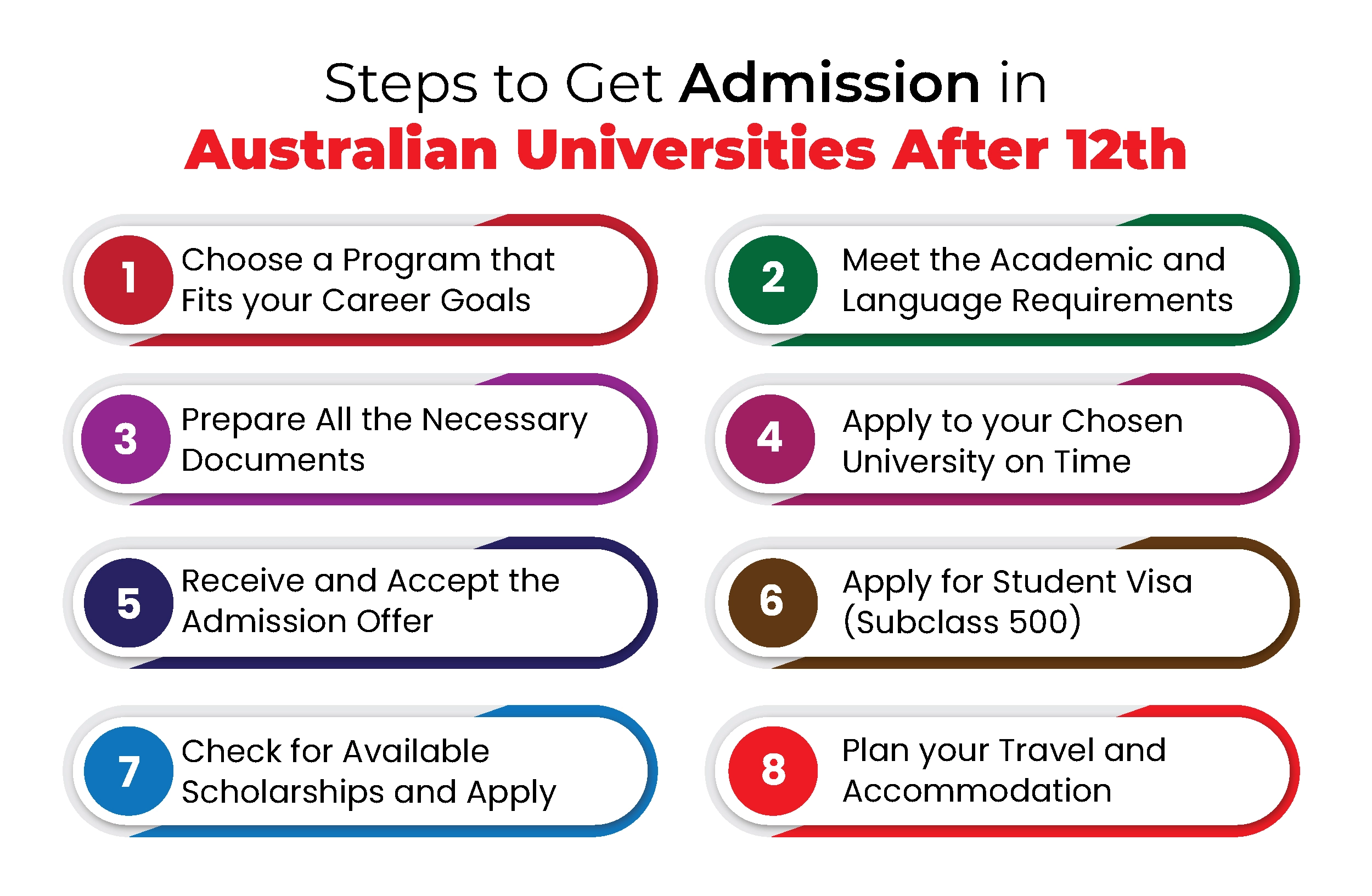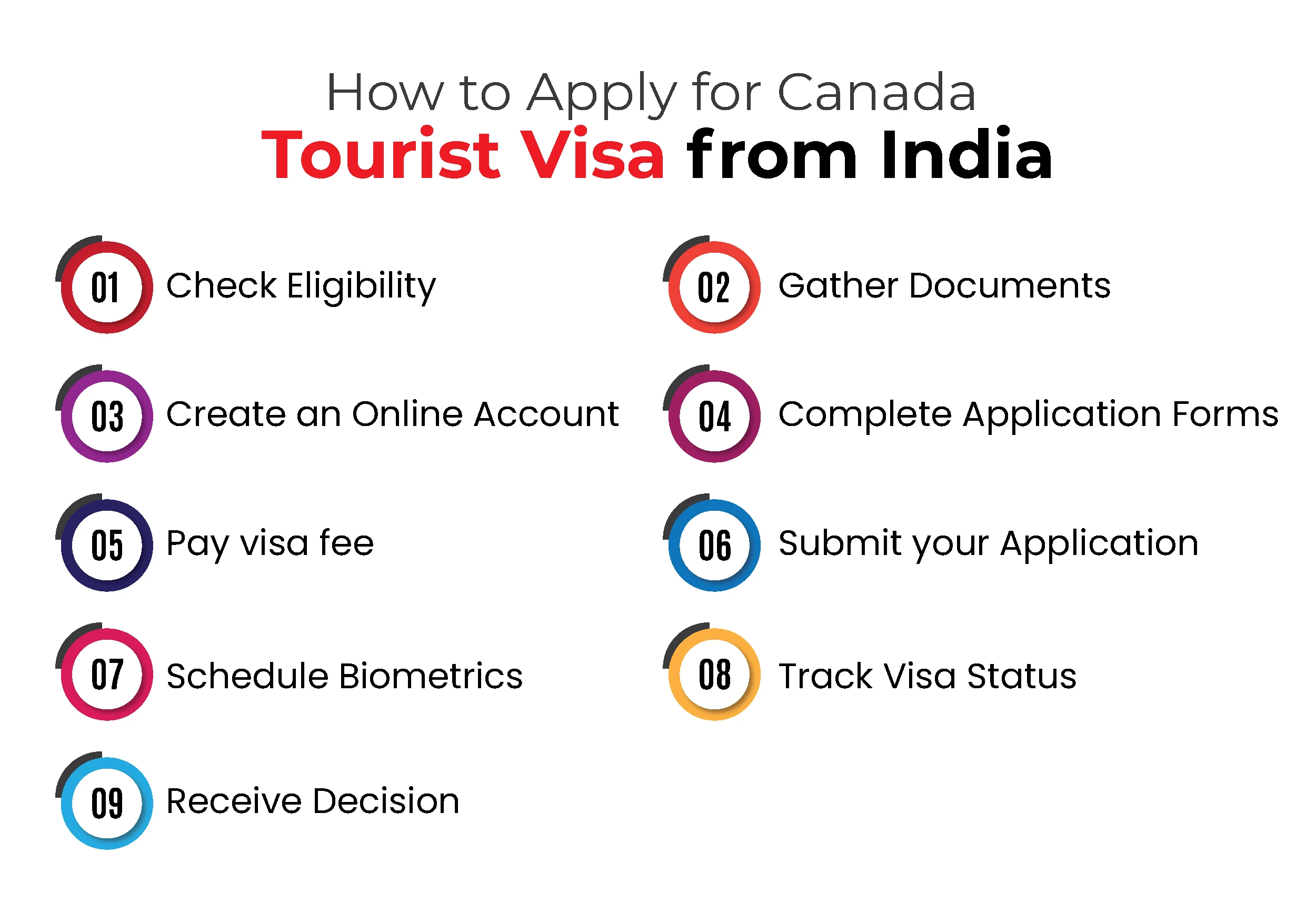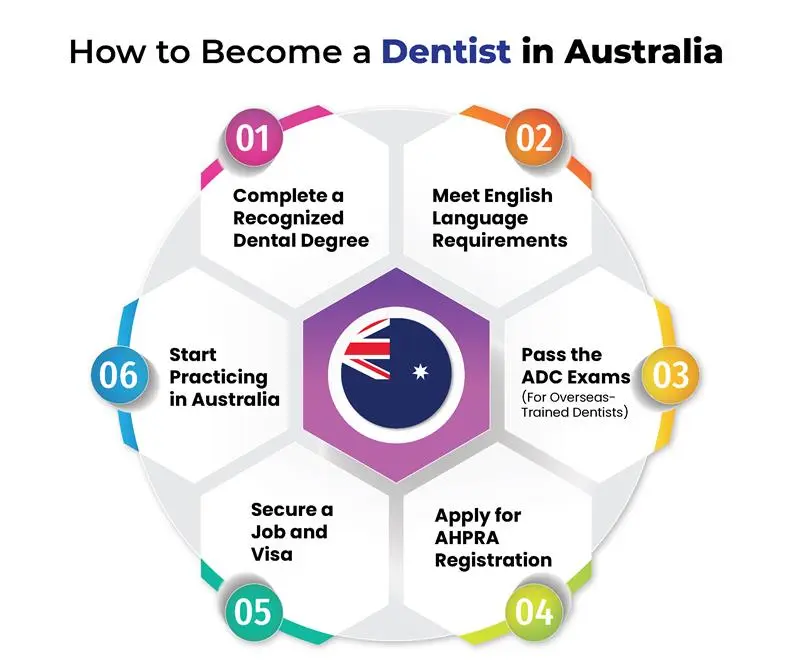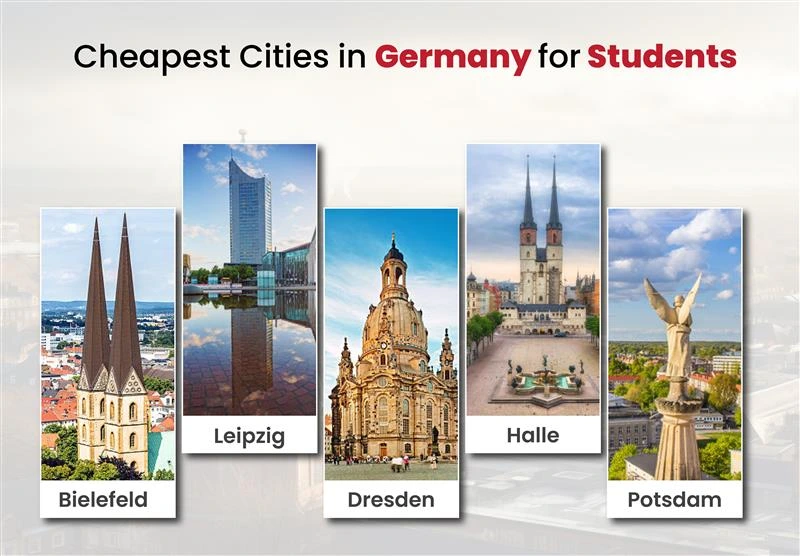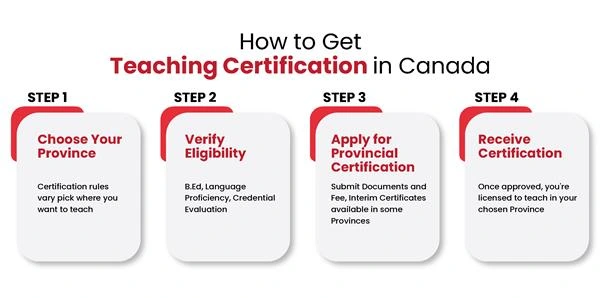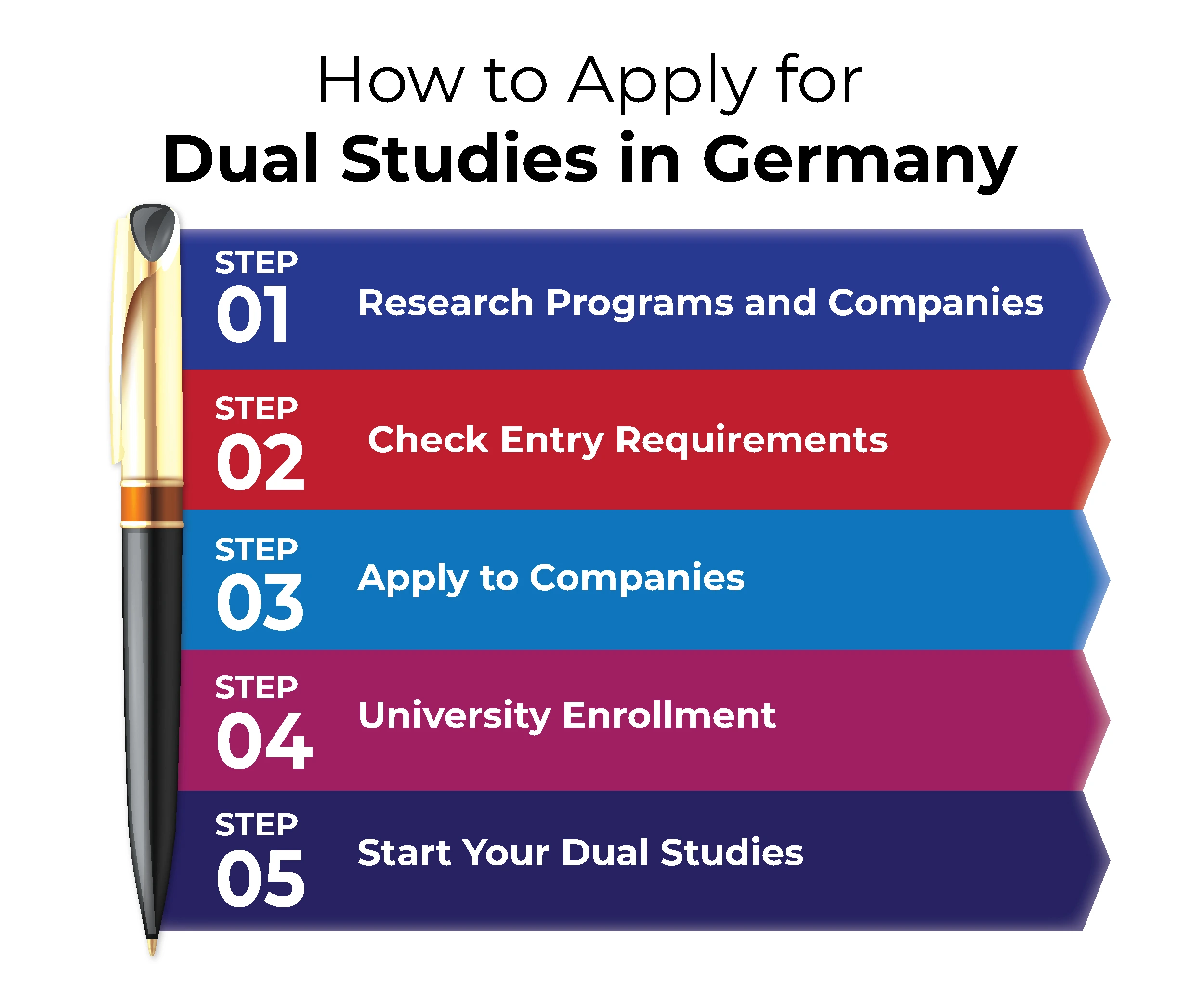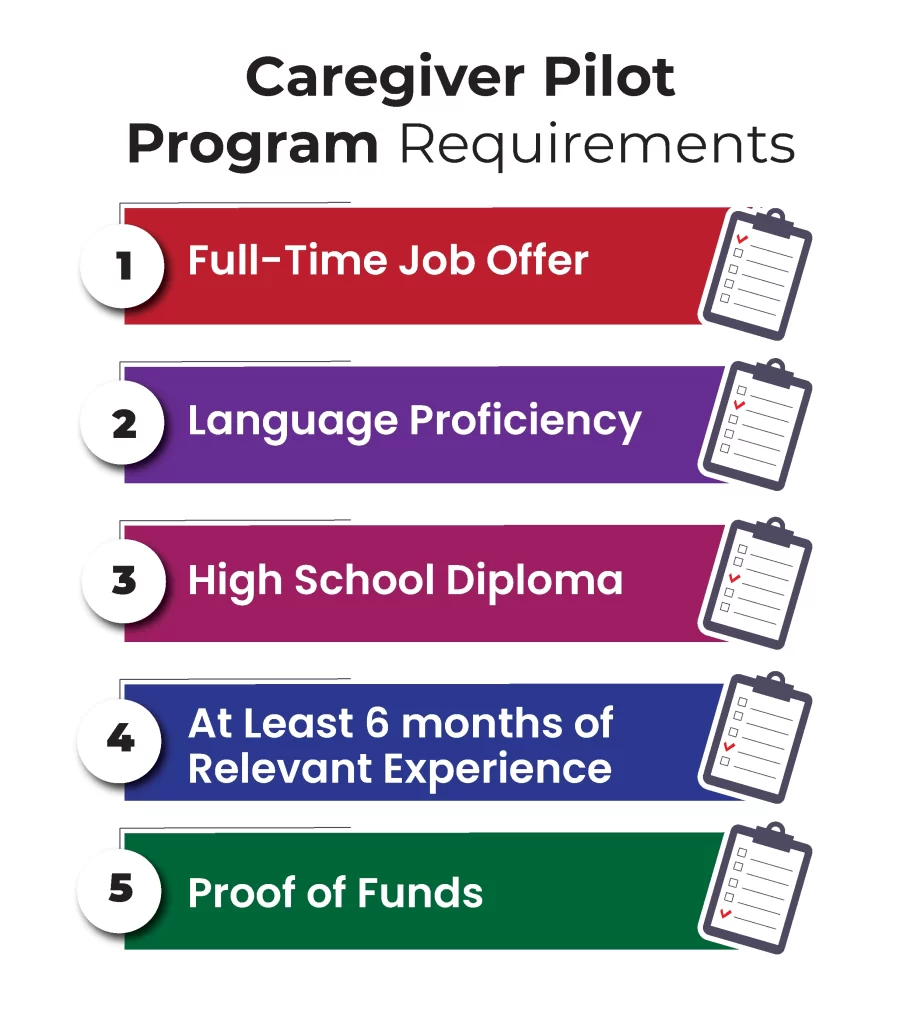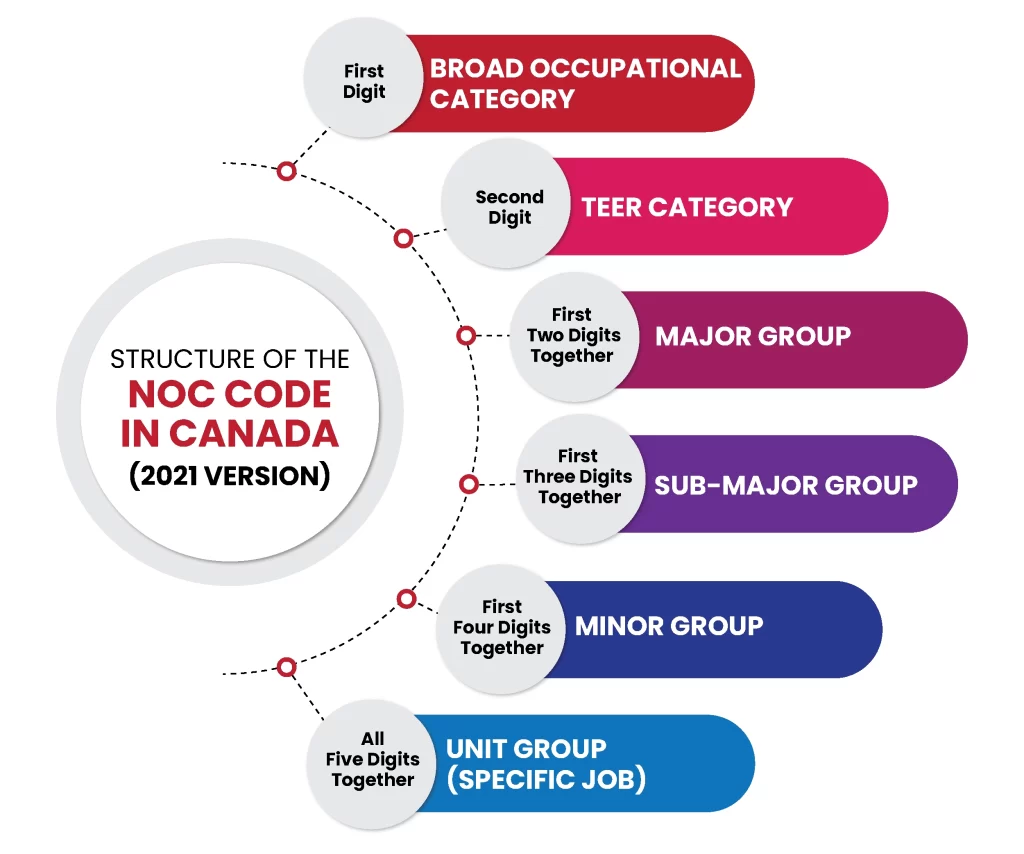Let’s take a look at the in-demand trade occupation list Canada for 2025.
Trade occupations in Canada refer to hands-on, skill-based professions that typically require vocational training or apprenticeships rather than a traditional university degree. These jobs are very much important for the country’s economy and span across industries like construction, manufacturing, electrical, plumbing, and automotive services.
Table Of Content
1What are Trade Occupations in Canada2Top In-Demand Trade Occupation List in Canada3How to Immigrate to Canada as a Skilled Trade Worker4Trade Occupations List Express Entry5Skilled Trade Certificate6How to get Skilled Trade Certificate7Top 10 Highest Paying Skilled Trades in Canada8Frequently Asked Questions
What are Trade Occupations in Canada
The trade occupation list Canada cover a wide range of fields such as:
Construction (e.g., carpenters, electricians, plumbers)
Mechanical and Technical Services (e.g., HVAC technicians, heavy-duty equipment mechanics)
Manufacturing and Fabrication (e.g., welders, machinists)
Automotive and Transportation (e.g., auto mechanics, truck and bus technicians)
Due to growing demand and a retiring workforce, Canada consistently seeks skilled trade workers to fill labour shortages. These occupations not only offer job security and competitive salaries but also serve as a strong pathway to Canada PR through programs like the Federal Skilled Trades Program (FSTP) and Canada Express Entry.
Top In-Demand Trade Occupation List in Canada
With over 300 designated trades, including 54 nationally recognized Red Seal trades, Canada offers a wealth of opportunities for individuals passionate about hands-on work, problem-solving, and real-world impact.
The Red Seal endorsement is a symbol of excellence for tradespeople across Canada. If you qualify for a Red Seal trade, it means:
- You can work in any Canadian province or territory
- Employers recognize and trust your standard of skill
- It adds a mark of prestige and mobility to your career
- It represents professional pride and confidence
Skilled trades in Canada are divided into several high-demand sectors. These are the key trade sectors in the Trade Occupation List Canada:
1. Construction
The construction sector is booming across Canada, driven by housing and infrastructure development. In-demand jobs include:
- Carpenters
- Electricians
- Plumbers
- Welders
- HVAC Technicians
- Painters and Decorators
2. Transportation
If you love working with vehicles, this sector offers roles like:
- Automotive Service Technicians
- Truck and Transport Mechanics
- Motorcycle and Heavy Equipment Technicians
3. Manufacturing & Industrial
This sector keeps Canada’s factories and industries running. In-demand trades include:
- Tool and Die Makers
- Millwrights (Industrial Mechanics)
- Metal Fabricators
- Steamfitters
- Industrial Electricians
4. Services
If you prefer client-facing roles and hands-on creativity, consider:
- Cooks
- Bakers
- Hair Stylists
5. Information & Digital Technology
Digital tools are now part of most trades. Basic tech knowledge is becoming a must, even in traditional skilled trades.
According to recent projections, Canada needs over 222,000 Red Seal certified workers by 2028. Some of the most in-demand trades from the Trade Occupation List Canada include:
- Cooks
- Hair Stylists
- Welders
- Industrial Electricians
- Industrial Mechanics (Millwrights)
These skilled workers are essential in provinces like Alberta, Ontario, and British Columbia.
How to Immigrate to Canada as a Skilled Trade Worker
Whether you’re an experienced electrician, a skilled carpenter, or a chef with hands-on expertise, there are several pathways that can lead you to permanent residency. Here’s a closer look at the top Canada immigration options that is suitable for trade workers:
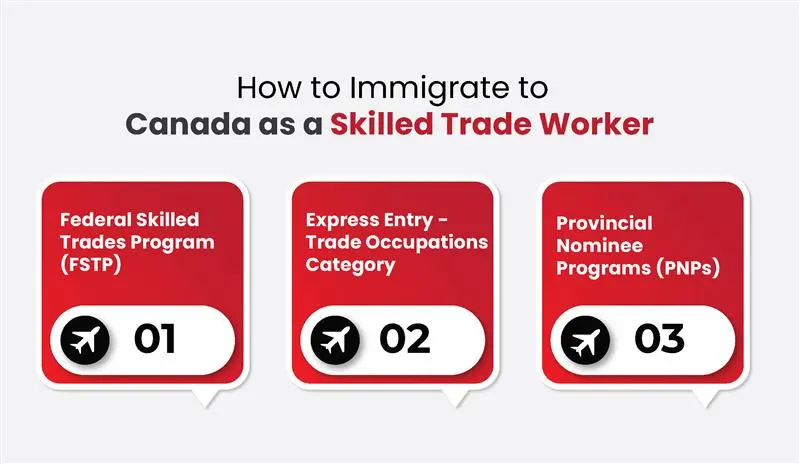
1. Federal Skilled Trades Program (FSTP)
The Federal Skilled Trades Program (FSTP) is one of the three main immigration streams under Canada Express Entry system. It was created specifically for skilled trade professionals who have the practical experience needed in Canada’s growing workforce.
Who is eligible?
This program is designed for people working in occupations such as:
- Electricians
- Welders
- Plumbers
- Carpenters
- HVAC mechanics
- Chefs and cooks
- Heavy-duty equipment mechanics
One major advantage of the FSTP is that the Comprehensive Ranking System (CRS) scores required to receive an Invitation to Apply (ITA) tend to be lower compared to other Express Entry categories. That means trade workers often have a higher chance of getting selected, especially during targeted draws.
2. Express Entry – Trade Occupations Category
In response to labor market needs, Canada recently introduced a new category under Express Entry that specifically targets trade professionals listed in the Trade Occupation List for 2025. This category falls under the broader Express Entry system but focuses on individuals with experience in high-demand trades.
To qualify under this category:
- Your job must match one of the occupations listed in the updated 2025 National Occupation Classification (NOC).
- You must have a minimum of 6 months of work experience in that specific trade.
- Your experience can be gained either in Canada or abroad—so international workers are eligible too.
This category has become a game-changer for tradespeople, allowing for faster processing and better chances of getting invited.
3. Provincial Nominee Programs (PNPs)
Canada’s provinces and territories also have their own immigration programs, many of which actively seek out skilled trades workers to fill regional labor shortages. These are called Provincial Nominee Programs (PNPs), and they can significantly boost your chances of becoming a permanent resident.
Here are a few PNPs that are ideal for trade workers:
Ontario Immigrant Nominee Program (OINP) – Skilled Trades Stream
Perfect for those already working in Ontario in a skilled trade and have at least one year of local experience.
Alberta Advantage Immigration Program (AAIP) – Opportunity and Trade Occupation Stream
Designed for workers in targeted trade occupations who want to settle in Alberta.
British Columbia Provincial Nominee Program (BC PNP) – Skills Immigration: Entry Level and Semi-Skilled
A good option if you’re already working in BC in an eligible trade occupation.
The biggest perk of receiving a provincial nomination is that it gives you 600 additional CRS points in your Express Entry profile. This practically guarantees an Invitation to Apply (ITA) in the next Canada Express Entry draw.
Trade Occupations List Express Entry
Canada is rolling out the red carpet for skilled trade professionals. Whether you apply through the Federal Skilled Trades Program, the new Express Entry trade occupations stream, or one of the many PNPs, your skills are in high demand.
Here’s a breakdown of the approved trade occupation list Canada, based on the 2021 NOC system:
| Occupation | NOC Code | TEER Level |
|---|---|---|
| Construction estimators | 22303 | 2 |
| Cooks | 63200 | 3 |
| Construction managers | 70010 | 0 |
| Home building and renovation managers | 70011 | 0 |
| Machinists and machining and tooling inspectors | 72100 | 2 |
| Sheet metal workers | 72102 | 2 |
| Welders and related machine operators | 72106 | 2 |
| Electricians (except industrial and power system) | 72200 | 2 |
| Industrial electricians | 72201 | 2 |
| Plumbers | 72300 | 2 |
| Gas fitters | 72302 | 2 |
| Carpenters | 72310 | 2 |
| Cabinetmakers | 72311 | 2 |
| Bricklayers | 72320 | 2 |
| Construction millwrights and industrial mechanics | 72400 | 2 |
| Heavy-duty equipment mechanics | 72401 | 2 |
| Heating, refrigeration and air conditioning mechanics | 72402 | 2 |
| Electrical mechanics | 72422 | 2 |
| Water well drillers | 72501 | 2 |
| Other technical trades and related occupations | 72999 | 2 |
| Concrete finishers | 73100 | 3 |
| Roofers and shinglers | 73110 | 3 |
| Painters and decorators (except interior decorators) | 73112 | 3 |
| Floor covering installers | 73113 | 3 |
| Contractors and supervisors, oil and gas drilling/services | 82021 | 2 |
Skilled Trade Certificate
A Skilled Trade Certificate is an official document that proves you’re qualified to work in a specific trade, such as electrician, plumber, carpenter, welder, or HVAC mechanic. It shows that you’ve met the training, experience, and competency standards set by a province or territory.
In many trades, this certificate is mandatory to legally work in that occupation (these are known as compulsory trades).
Types of Trade Certifications:
Provincial Trade Certification: Issued by individual provinces for specific trades. Requirements vary by region.
Red Seal Certification (interprovincial): A prestigious national credential that lets you work across Canada without re-certifying in each province.
How to get Skilled Trade Certificate
Step 1: Check if Your Trade is Regulated
Not all trades are regulated, but for those that are, certification is often required.
Step 2: Assess Your Experience
If you’re an internationally trained tradesperson, you may need to undergo a trade credential assessment
Step 3: Challenge the Exam or Complete Training
- If you have work experience, you may be able to challenge the certification exam directly.
- Otherwise, you may need to complete an apprenticeship program or additional training.
Step 4: Apply for Certification
Apply through the relevant provincial trade authority (e.g., SkilledTradesBC, Skilled Trades Ontario, Alberta Apprenticeship and Industry Training).
Highest Paying Trades in Canada
Here are the Top 10 Highest Paying Skilled Trades in Canada 2025 (based on latest trends, job market demand, and provincial wage data):
| Trade Occupation | Average Annual Salary | Notes |
|---|---|---|
| Construction Managers | $90,000 – $130,000 | TEER 0 – Leadership role with site responsibility |
| Industrial Electricians | $80,000 – $110,000 | Red Seal certified tradespeople are in demand |
| Powerline Technicians | $85,000 – $105,000 | Often employed by utilities & energy sectors |
| Steamfitters / Pipefitters | $75,000 – $100,000 | Especially needed in oil & gas industries |
| Welders (with advanced certification) | $70,000 – $100,000 | Those with underwater or high-pressure welding earn more |
| HVAC Technicians (Heating & Refrigeration) | $70,000 – $95,000 | Work in both residential and industrial sectors |
| Construction Millwrights / Industrial Mechanics | $70,000 – $90,000 | Vital for factory/plant equipment maintenance |
| Gasfitters | $65,000 – $90,000 | High demand in construction and utilities |
| Sheet Metal Workers | $60,000 – $85,000 | Installation and fabrication of ducts, roofs, etc. |
| Heavy-Duty Equipment Mechanics | $65,000 – $85,000 | Especially needed in mining and construction |
By securing a skilled trade certification and aligning with the in-demand occupations, you can not only build a rewarding career but also enjoy a high standard of living in one of the world’s most welcoming countries. If you’re ready to turn your skills into a future in Canada, now is the perfect time to take the next step.
Start your Canadian journey today—your trade, your future with CanApprove!


